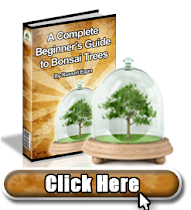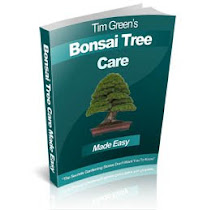Welcome back to Indoor Bonsai for Beginners!
Before we start diving into the different styles of indoor bonsai trees - let's recap what we've already discussed:
Basic Bonsai Tools 101 for Indoor Bonsai
In this lesson we talked about the fact that there are MANY different indoor bonsai tools available to you. We found out there are (4) basic tools that you will need as a beginner to the hobby:
- Concave Pruner
- Bud Scissors
- Bonsai Wire Cutters
- Knob Cutters
This lesson we talked about the (2) best tree choices for beginners: the Japanese Red Maple and the Juniper. We determined that because your first bonsai will probably not make it, that we would start with the Juniper because it is cheap and easy to prune.
There are also some great resources for you to learn more about bonsai before beginning to work on your first Japanese bonsai tree:
RESOURCES
The Complete Beginners Guide To Bonsai
Classic Bonsai of Japan
The Art of Bonsai: Creation, Care and Enjoyment
The History of Bonsai
Let's begin this lesson with a basic Bonsai history lesson.
The word "bonsai" can be translated as "tray planting". The art of bonsai is believed to have started in the Han Dynasty (206 BC - 220 AD) in China. Legend indicates that an emperor created a landscaping design in his courtyard which was so detailed that it included valleys, rivers, lakes, hills and trees. It is believed he created this miniature representation of his empire so he might gaze upon it from his palace window.
It was not until the Heian Period (794 - 1191 AD) that bonsai is believed to have been brought to Japan by Buddhist monks. The art of bonsai became a privilege only practiced by the wealthiest of families. It was only after the Chinese invasion of Japan in the 14th century that bonsai was allowed to be created by all classes of Japanese society. After bonsai was established in Japan, they went to extreme measures to fine-tune the art and much credit must be given to these early bonsai masters. The changes they made is reflected in what we consider to be bonsai today.
Bonsai began to expand westward. The earliest example of this was at the Third Universal Exhibition in Paris in 1878. The bonsai were not received well by the people of Europe and many felt the trees looked "tortured". These opinions remained in place until 1935 when bonsai was finally deemed an art form in the west.
At the end of World War II, bonsai rose to popularity once again. Soldiers returning from Japan with bonsai trees set off interest in the art. The large population of Japanese-Americans were fundamentally essential in teaching westerners how to properly care for their bonsai. Their knowledge helped to fuel a movement in America and sparked much interest in bonsai.
Our next lesson will go over the different indoor bonsai tree types.










